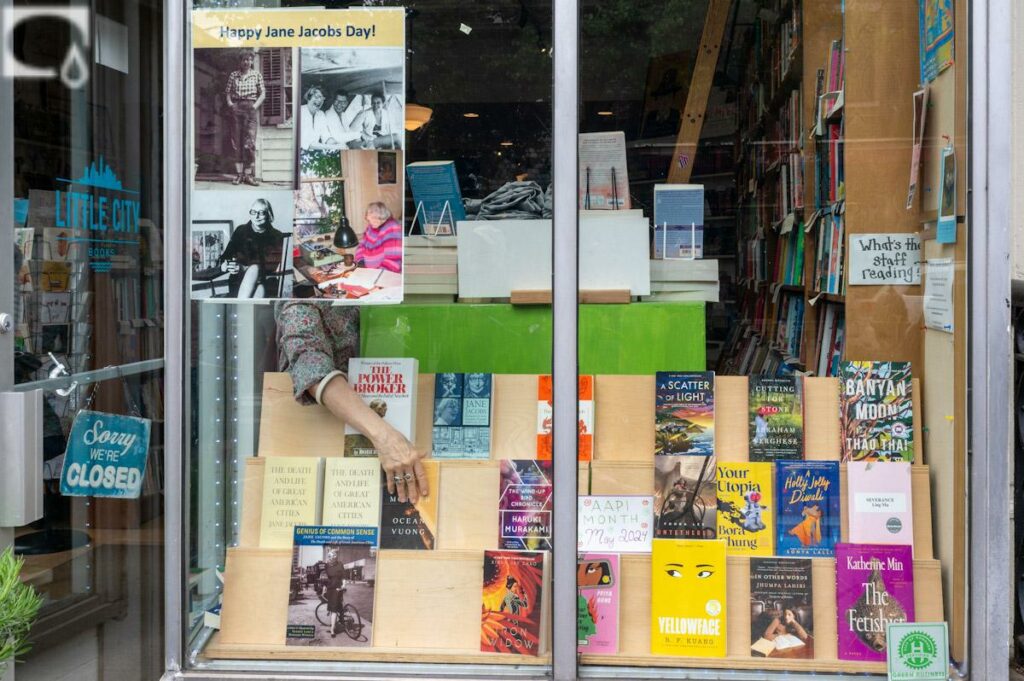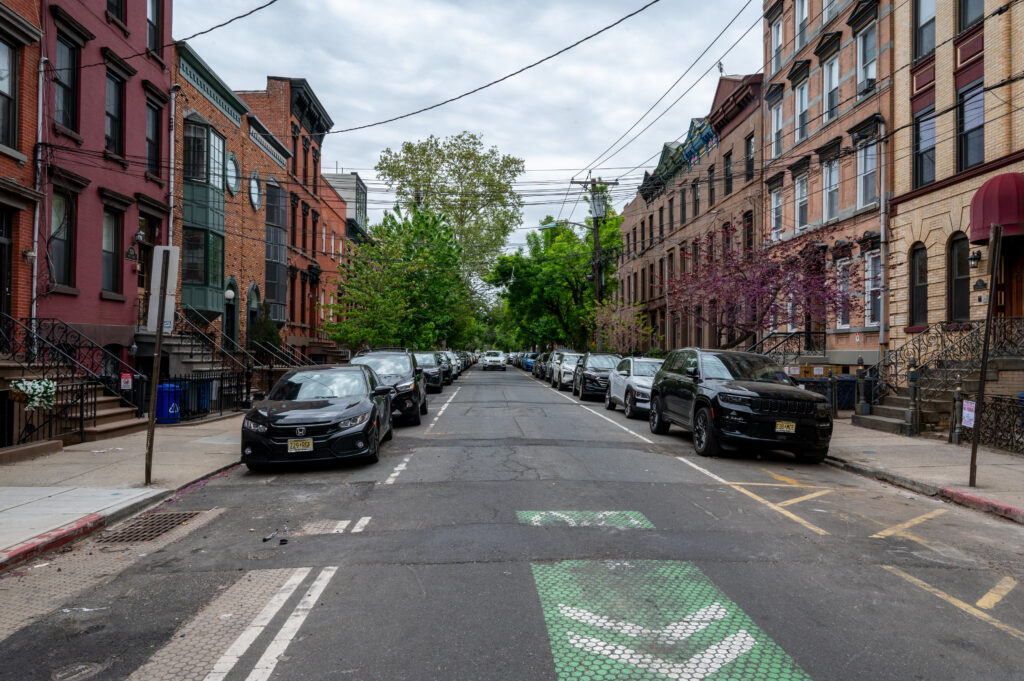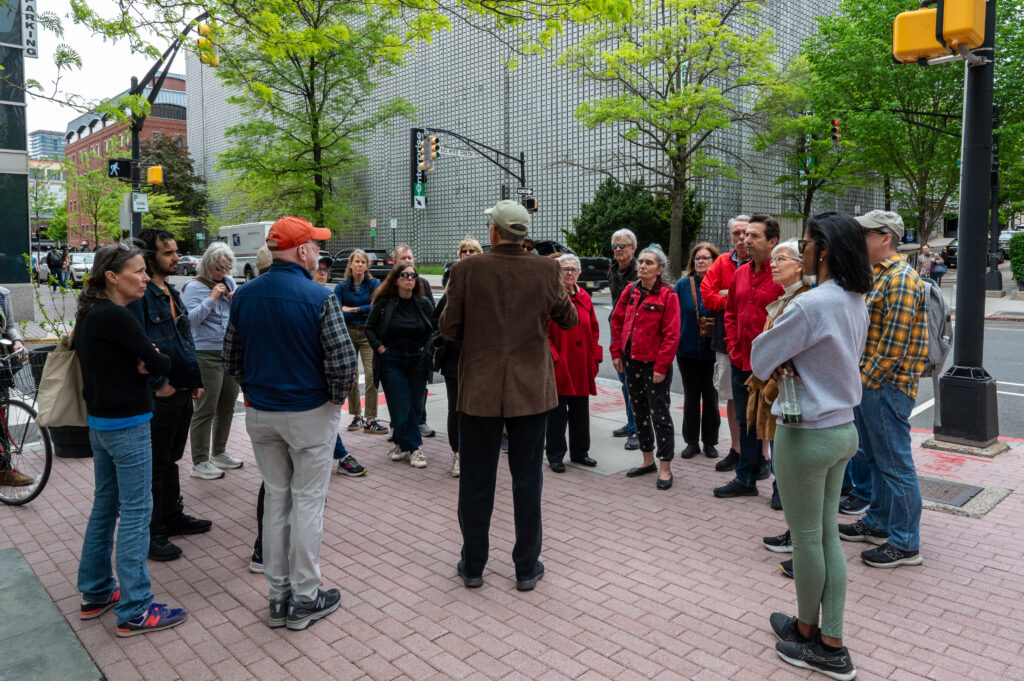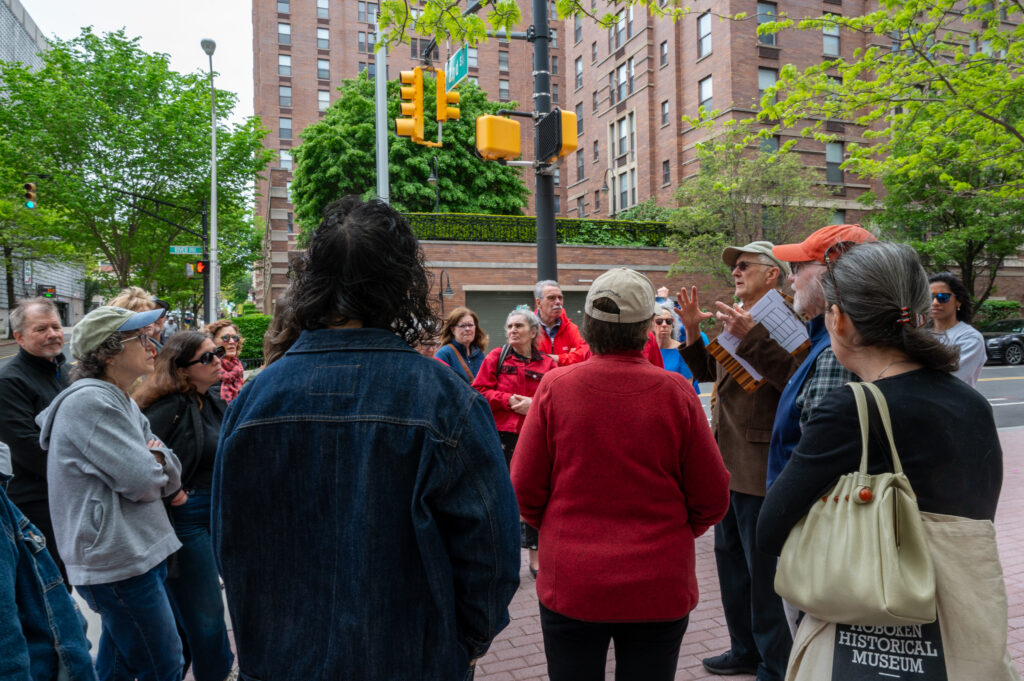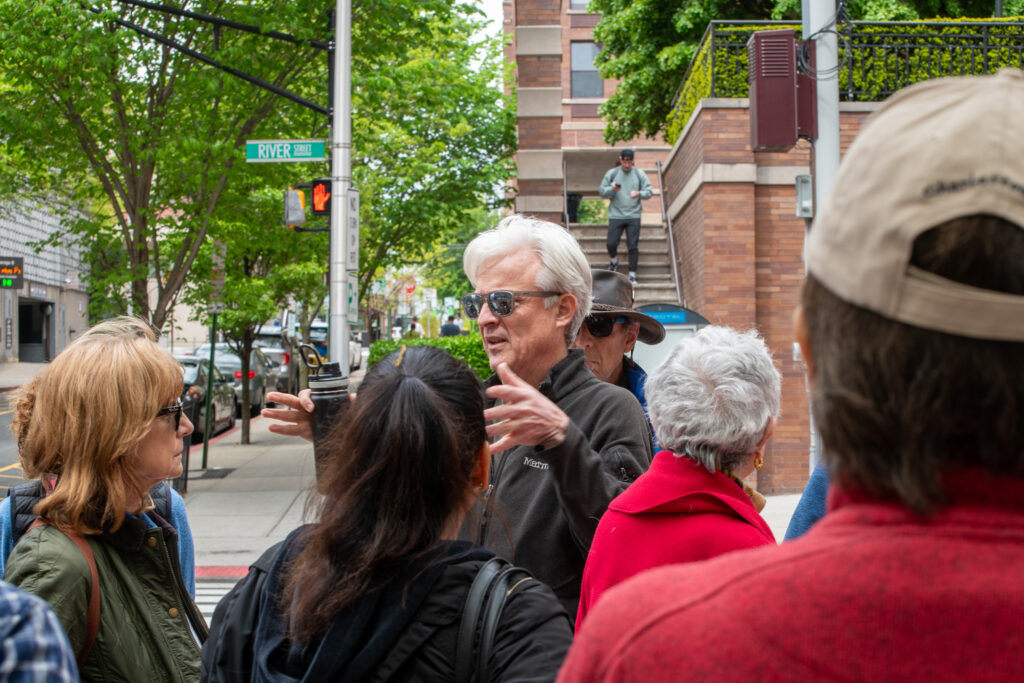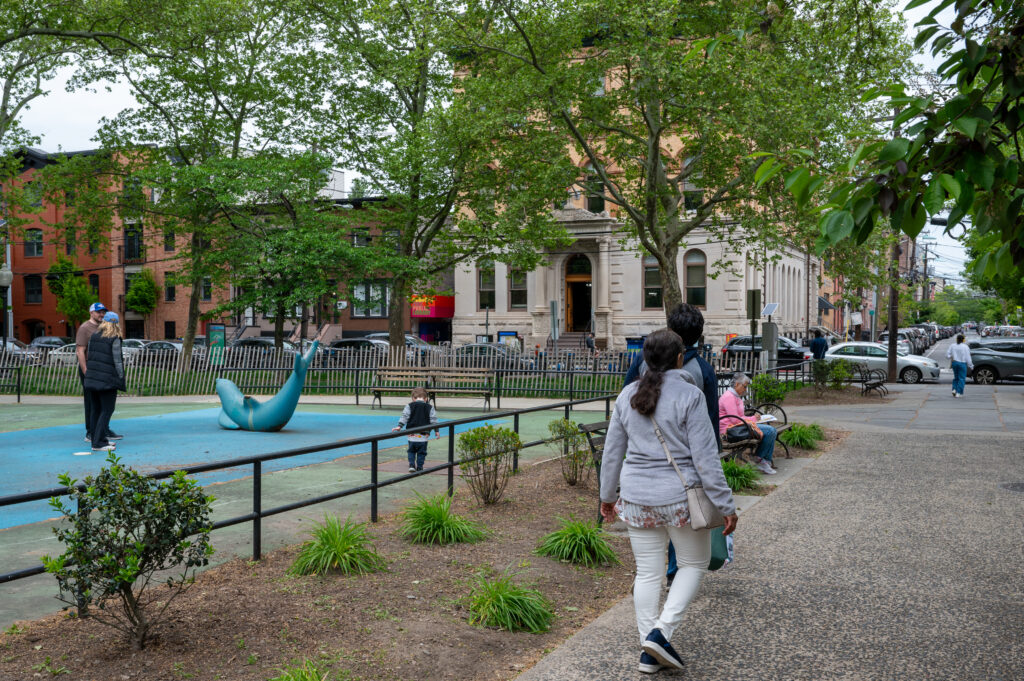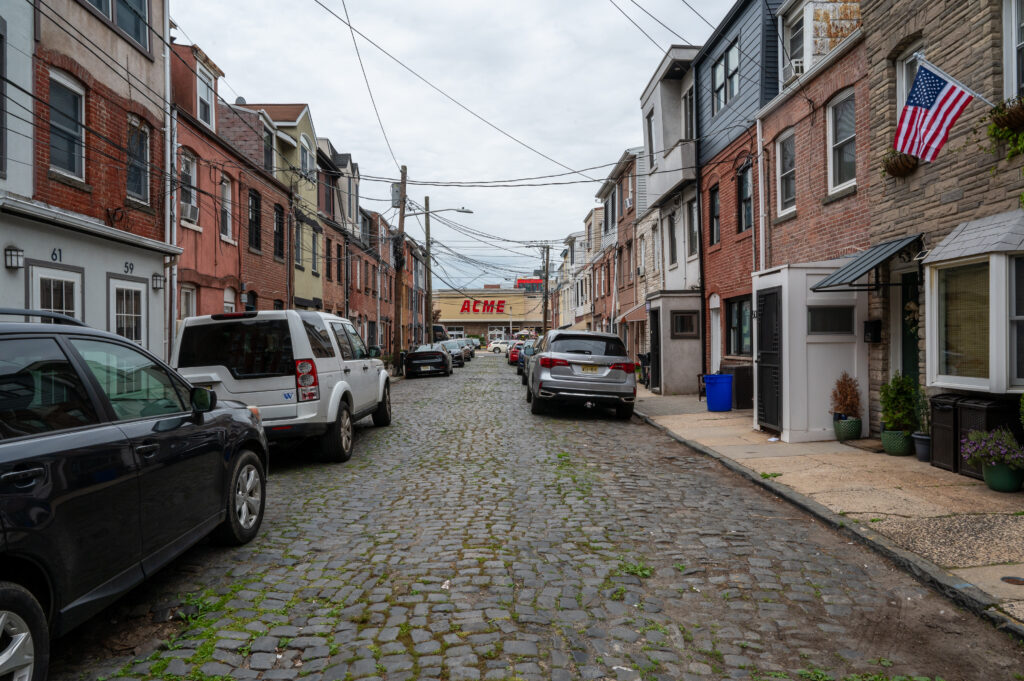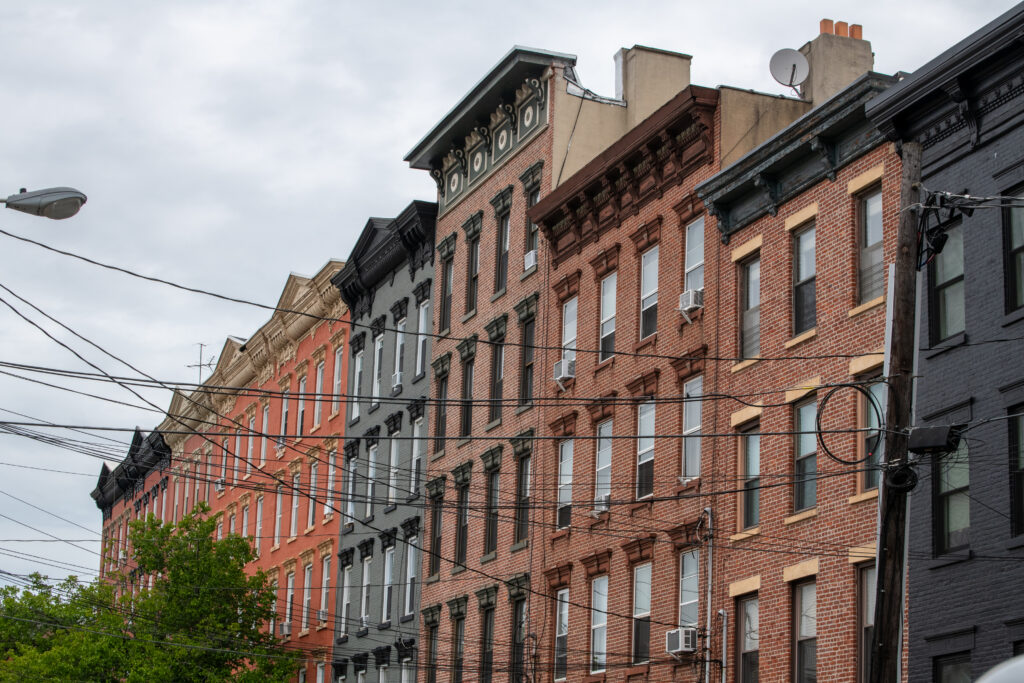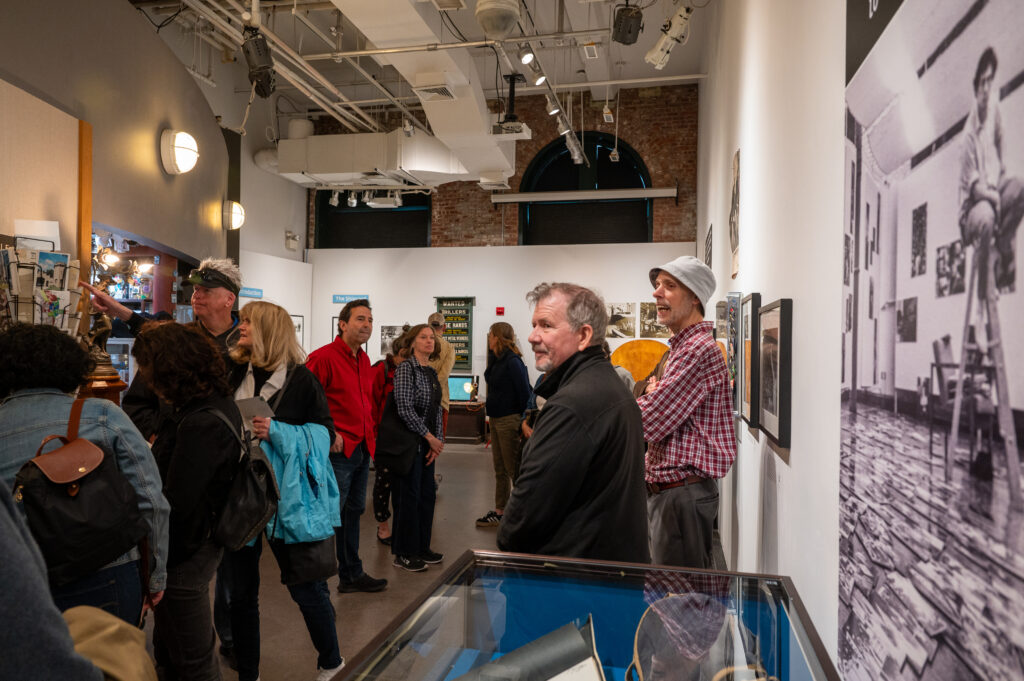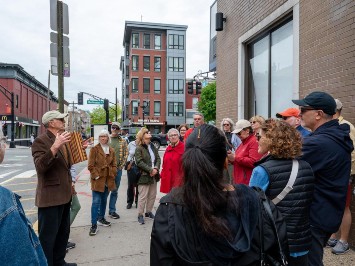Jane’s Walk took place in over 400 communities around the world the weekend of May 3 through May 5, including this tour in Hoboken sponsored by the Hoboken Historical Museum and the Fund for a Better Waterfront
Jane’s Walk Hoboken began at Little City Books on First & Bloomfield where there was a window display that included photographs of Jane Jacobs and her book, The Death and Life of Great American Cities.
Kate Jacobs, the co-owner of Little City Books, kicked off the tour telling personal stories about her Aunt Jane.
Jane Jacobs would have appreciated the traditional Hoboken high-density neighborhoods with a mix of residential and retail uses and front doors of multiple buildings lining the street.
At Second and River Streets, we saw examples of 1960s urban renewal that demolished a three-block area and replaced it with high-rise towers and massive parking garages, the type of project that Jane Jacobs would have opposed.
Hudson Square South and Hudson Square North turned their back on the street and situated its front doors facing interior courtyards, thus creating a lifeless streetscape.
FBW Board member and architect Carrow Thibault provided his expertise to the group.
Hoboken’s South Waterfront represents a well-planned development with the traditional public street grid extended, a clear delineation between the private upland development and the public waterfront park, front doors and retail space facing the street and the waterfront park.
Tour leader, FBW Executive Director Ron Hine, points out the lively streetscape along the waterfront resulting from FBW’s 1990 Plan for the Hoboken Waterfront that embraced most of the principles that Jane Jacobs recommended.
Church Square Park is an example of what, according to Jane Jacobs, makes public parks successful. The park is bounded by public streets, clearly delineating the public from the private. A church, two schools, the public library and a mix of retail and residential uses face the park, helping to frame it and define its character.
Church Towers is another example of failed 1960s urban renewal that tore down several blocks of historic buildings, replacing them with towers surrounded by surface parking lots and private open space that is seldom used.
Willow Terrace is a departure from Hoboken’s traditional street layout that offers variety and a unique feature to this mid-Hoboken neighborhood.
Hoboken, one of the most densely built cities in the country, was nevertheless built to a human scale with buildings 3 to 5 stories high from the late 1800s through the early 1900s.
After a 1.25-mile tour through Hoboken, we end at the Hoboken Historical Museum at 1301 Hudson Street.
